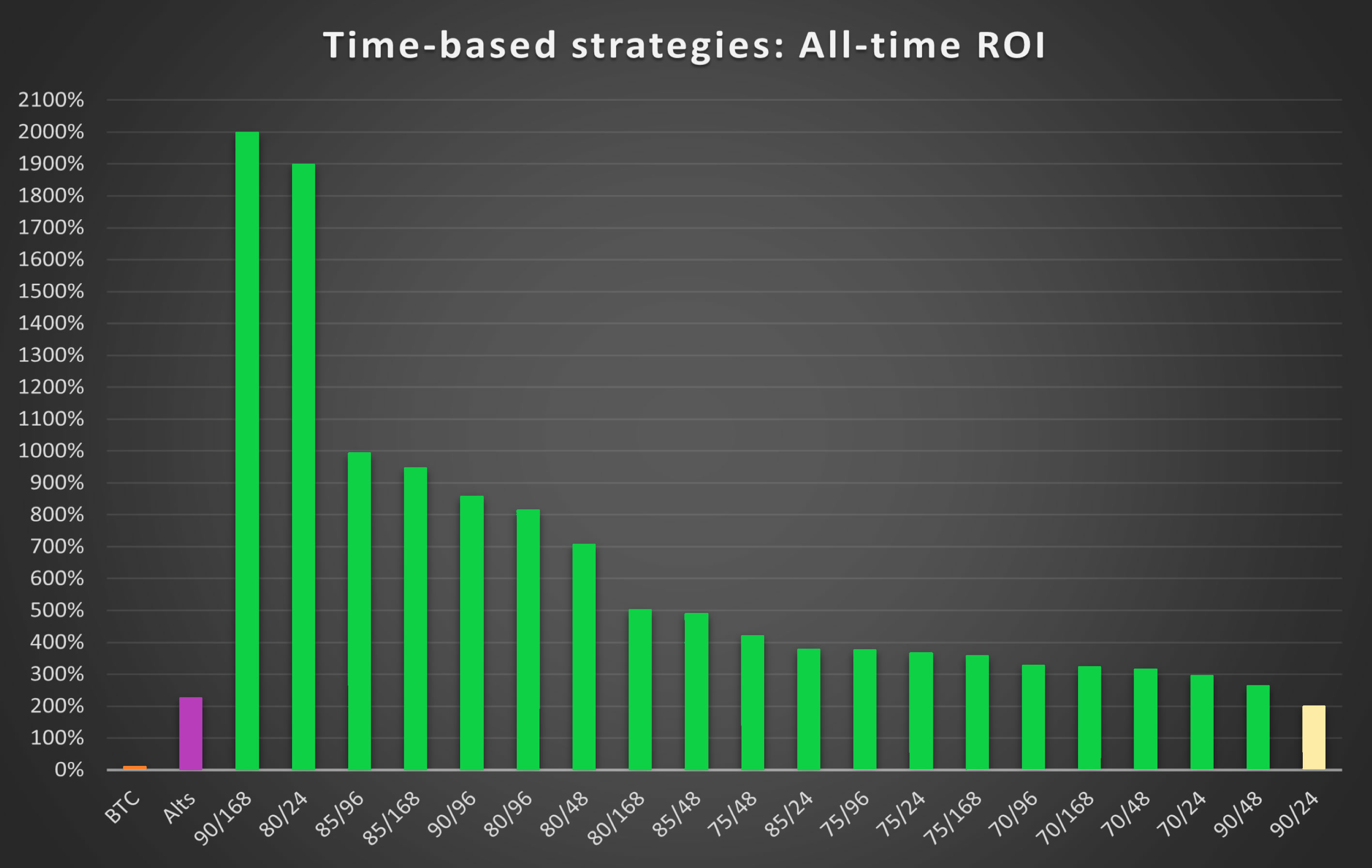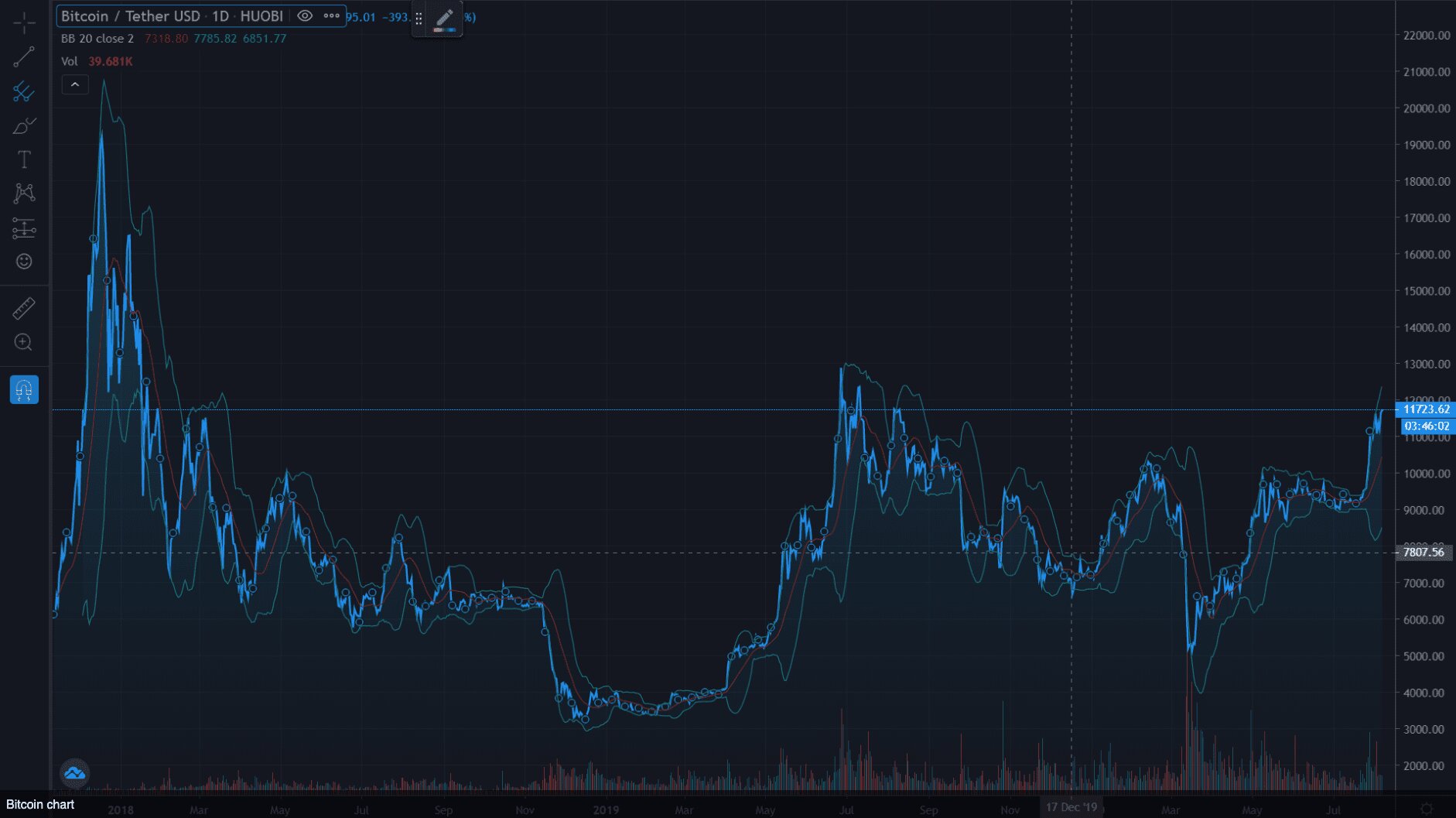Introduction
Welcome to the world of cryptocurrency, where digital assets and decentralized networks are reshaping the global financial landscape. As the popularity of cryptocurrencies continues to soar, it becomes crucial for investors and enthusiasts to have a clear understanding of how to calculate crypto. Whether you are contemplating investing in a particular digital currency or simply interested in staying informed about the market, knowing how to perform these calculations is essential.
Cryptocurrency refers to digital or virtual currencies that utilize cryptography for secure and anonymous financial transactions. Unlike traditional fiat currencies, cryptocurrencies are not issued or regulated by a central authority such as a bank or government. Instead, they rely on blockchain technology, which is a decentralized and transparent ledger system.
Why is calculating crypto important? The crypto market is highly volatile, with prices that can fluctuate dramatically within a short period. Performing calculations allows investors to assess the value and potential of a particular cryptocurrency before making investment decisions. By understanding key metrics such as market cap, circulating supply, and trading volume, investors can make more informed choices and manage risk effectively.
In this article, we will delve into the basics of calculating crypto and provide step-by-step guidance on how to perform essential calculations. We will explore key metrics, including market cap, price per coin, total supply, and circulating supply. Additionally, we will discuss the significance of calculating trading volume and market dominance to gain further insight into a cryptocurrency’s market performance and position.
By the end of this article, you will have a solid foundation in calculating crypto and be equipped with the knowledge to evaluate the value and potential of different cryptocurrencies. So, let’s dive into the world of cryptocurrency calculations and unlock the secrets of the digital financial realm.
Understanding Cryptocurrency
Cryptocurrency is a revolutionary form of digital currency that utilizes cryptographic technology to secure transactions and control the creation of new units. It operates on a decentralized network, typically based on blockchain technology, which ensures transparency, security, and immutability.
Unlike traditional fiat currencies like the US Dollar or the Euro, which are issued and regulated by central banks, cryptocurrencies are not governed by any central authority. Instead, they rely on advanced cryptographic algorithms and consensus mechanisms to validate and record transactions.
One of the fundamental principles of cryptocurrencies is decentralization. This means that no single entity or government has control over the cryptocurrency network. Transactions are verified and added to the blockchain by a network of computers, known as miners or validators, who compete to solve complex mathematical problems. Once a block of transactions is verified, it is added to the blockchain and becomes a permanent record.
Another essential feature of cryptocurrencies is anonymity. While transactions are recorded on the blockchain, the identities of the transacting parties are typically hidden. Instead of using real names, users are identified by random strings of characters known as public addresses. This anonymity provides users with privacy and security, making it difficult for third parties to track or manipulate transactions.
One of the primary reasons why cryptocurrencies gained widespread popularity is their potential for financial inclusion. Traditional banking systems often have barriers and limitations, especially for individuals in developing countries or those without access to traditional financial services. Cryptocurrencies provide an alternative financial system that allows people to store, send, and receive funds securely and quickly, without the need for a bank account.
It’s important to note that cryptocurrencies come in various forms, each with its own unique features and purposes. Bitcoin, the first and most well-known cryptocurrency, was created as a digital currency for peer-to-peer transactions. Ethereum, on the other hand, introduced smart contracts, enabling the development of decentralized applications (dApps) and the execution of automated agreements.
As the cryptocurrency landscape continues to evolve, new cryptocurrencies are being introduced regularly, each with its own goals and innovations. Understanding the fundamentals of cryptocurrency is essential for anyone looking to explore this exciting and rapidly growing industry.
The Importance of Calculating Crypto
Calculating crypto is not just a technical exercise; it holds significant importance for investors, traders, and enthusiasts in the cryptocurrency market. By performing these calculations, individuals can gain valuable insights into a cryptocurrency’s value, potential, and market performance. Let’s explore why calculating crypto is of utmost importance:
1. Assessing Investment Potential: Calculating essential metrics such as market cap, price per coin, and circulating supply allows investors to evaluate the potential of a cryptocurrency. These calculations provide a snapshot of a cryptocurrency’s market size, valuation, and liquidity, helping investors make informed decisions.
2. Managing Risk: Cryptocurrency investments carry inherent risks due to market volatility. Calculating trading volume and market dominance helps investors gauge the level of activity and interest in a particular cryptocurrency. High trading volume indicates liquidity and market activity, while market dominance reflects a cryptocurrency’s position relative to other digital assets. These metrics aid in managing and mitigating investment risks.
3. Evaluating Market Trends: By analyzing price fluctuations, market capitalization changes, and trading volume over time, individuals can identify patterns and trends in the cryptocurrency market. This information helps investors and traders make strategic decisions and capitalize on market opportunities.
4. Comparing Cryptocurrencies: Calculating key metrics allows for easy comparison between various cryptocurrencies. This enables individuals to assess the strengths, weaknesses, and potential of different digital assets and make informed choices based on their investment objectives.
5. Understanding Market Dynamics: Calculations provide a deeper understanding of the market dynamics surrounding a cryptocurrency. For example, calculating circulating supply can help determine if a particular cryptocurrency has a limited or ample supply, which can impact its value. Additionally, analyzing trading volume can provide insights into market sentiment and demand.
6. Evaluating Growth Potential: By tracking a cryptocurrency’s market cap and price over time, individuals can assess its growth potential. This information enables investors to spot cryptocurrencies with high growth rates and invest strategically.
7. Informed Decision-Making: Ultimately, calculating crypto empowers individuals to make informed decisions about buying, selling, or holding digital assets. It provides a solid foundation for understanding the financial aspects of cryptocurrencies and eliminates reliance on speculation or guesswork.
As the cryptocurrency market continues to evolve, accurate and informed calculations become increasingly crucial. By staying up-to-date with the latest metrics and utilizing the tools available for calculation, individuals can navigate the cryptocurrency market with confidence and precision.
The Basics of Calculating Crypto
Calculating crypto involves understanding key metrics that provide insights into the value, potential, and market performance of a cryptocurrency. Let’s explore the basic calculations that are essential for evaluating digital assets:
1. Researching the Crypto: Before diving into calculations, it is crucial to research and gather relevant data about the cryptocurrency you are interested in. This includes understanding its concept, underlying technology, team, and market presence.
2. Identifying the Key Data Points: The first step in calculating crypto is identifying the key data points needed for the calculations. These include market cap, price per coin, total supply, circulating supply, trading volume, and market dominance.
3. Calculating Market Cap: Market cap is the total value of a cryptocurrency and is calculated by multiplying its current price by its total supply. It represents the size of the cryptocurrency’s market and is often used to compare different digital assets.
4. Calculating Price per Coin: Price per coin is calculated by dividing the market cap by the total supply of the cryptocurrency. It represents the value of each individual coin or token.
5. Calculating the Total Supply: Total supply refers to the maximum number of coins or tokens that will ever be created for a cryptocurrency. This information is usually available on the cryptocurrency’s official website or blockchain explorer.
6. Calculating Circulating Supply: Circulating supply represents the number of coins or tokens that are currently available in the market for trading. It excludes coins that are locked, held by the development team, or not yet released.
7. Calculating Trading Volume: Trading volume refers to the total number of coins or tokens traded on exchanges within a specified period, typically 24 hours. It indicates the level of market activity and liquidity of a cryptocurrency.
8. Calculating Market Dominance: Market dominance is the percentage of a cryptocurrency’s market cap relative to the total market cap of all cryptocurrencies. It helps assess the importance and influence of a particular cryptocurrency within the broader market.
9. Understanding Other Calculation Metrics: Apart from the key metrics mentioned above, there are other calculation metrics such as price change percentage, historical price charts, and ROI (Return on Investment). These metrics provide additional insights into a cryptocurrency’s performance and potential.
By understanding and performing these calculations, individuals can gain a comprehensive view of a cryptocurrency’s value and potential. These calculations serve as the foundation for making informed investment decisions and navigating the dynamic cryptocurrency market.
Step 1: Researching the Crypto
Before diving into calculations, it is crucial to conduct thorough research on the cryptocurrency you are interested in. A solid understanding of the crypto’s concept, underlying technology, team, and market presence will provide essential context for accurate calculations and informed decision-making. Here are some key aspects to consider:
1. Concept and Purpose: Start by understanding the fundamental concept and purpose of the cryptocurrency. What problem does it aim to solve? What unique features or benefits does it offer compared to other digital assets? This information will help you determine if the crypto aligns with your investment goals and values.
2. Underlying Technology: Dive into the technical details of the cryptocurrency’s underlying technology. Is it based on blockchain or another decentralized protocol? Does it utilize smart contracts or have other innovative features? Understanding the technology will provide insight into the scalability, security, and potential use cases of the crypto.
3. Development Team: Research the development team behind the cryptocurrency. Look for information about their experience, expertise, and track record in the industry. A competent and reputable team boosts confidence in the project’s potential and long-term viability.
4. Roadmap and Milestones: Explore the project’s roadmap and milestones to gain an understanding of its future plans and projected timelines. Assess the achievability of the goals outlined in the roadmap and evaluate if they align with your investment timeline and objectives.
5. Market Presence and Adoption: Analyze the cryptocurrency’s market presence and adoption rates. Look for information on partnerships, collaborations, and integrations with other companies or platforms. Assess user adoption and community engagement to gauge the level of interest and support for the crypto.
6. Regulatory Compliance: Consider the regulatory landscape surrounding the cryptocurrency. Are there any legal or regulatory challenges it may face? Understanding the potential risks and compliance requirements is essential for assessing the stability and longevity of the crypto.
7. Community and Social Media Presence: Participate in the cryptocurrency’s community and social media channels to gain insights from other enthusiasts and investors. Engage in discussions, ask questions, and stay updated on the latest news and developments related to the crypto.
8. Risk Factors: Identify and assess the potential risks associated with the cryptocurrency. This could include technological vulnerabilities, market volatility, regulatory uncertainties, or competition from other projects. Understanding the risks allows you to make informed decisions and develop risk mitigation strategies.
Thorough research lays the foundation for accurate calculations and informed decision-making. By gathering relevant information about the cryptocurrency you are interested in, you can confidently move on to performing the calculations necessary to evaluate its market value and potential.
Step 2: Identifying the Key Data Points
In order to accurately calculate a cryptocurrency’s value and market performance, it is essential to identify the key data points necessary for the calculations. These data points provide crucial information about the cryptocurrency’s market cap, price per coin, supply, and trading volume. Here are the key data points to consider:
1. Market Cap: Market capitalization, often referred to as market cap, is a key metric used to assess the size and value of a cryptocurrency. It represents the total worth of a crypto and is calculated by multiplying the price per coin by the total supply of coins or tokens in circulation.
2. Price per Coin: The price per coin is the value of an individual unit of the cryptocurrency. It is calculated by dividing the market cap by the total supply. The price per coin provides an indication of how much investors are willing to pay for each unit of the cryptocurrency.
3. Total Supply: The total supply refers to the maximum number of coins or tokens that will ever be created for a particular cryptocurrency. This can vary greatly between different cryptocurrencies. It is important to identify the total supply in order to accurately calculate market cap and price per coin.
4. Circulating Supply: The circulating supply represents the number of coins or tokens currently available in the market and in the hands of investors. It excludes coins that are locked, held by the development team, or not yet released. Calculating the circulating supply is crucial for determining market cap and evaluating the liquidity of a cryptocurrency.
5. Trading Volume: Trading volume refers to the total number of coins or tokens traded within a specific time period, typically 24 hours. It indicates the level of market activity and liquidity of a cryptocurrency. High trading volume is often a positive signal, indicating vibrant market interest and liquidity, while low trading volume may indicate less active trading.
6. Market Dominance: Market dominance is the percentage of a cryptocurrency’s market cap relative to the total market cap of all cryptocurrencies. It provides insight into the importance and influence of a particular cryptocurrency within the broader market. Higher market dominance implies a stronger market position for the crypto.
Identifying these key data points is crucial for conducting accurate calculations and understanding the financial aspects of a cryptocurrency. Armed with this information, you can move on to performing the necessary calculations to evaluate a cryptocurrency’s value, potential, and market performance.
Step 3: Calculating Market Cap
Calculating the market capitalization, or market cap, of a cryptocurrency is a fundamental step in evaluating its overall value and market position. Market cap provides an estimate of the total worth of a cryptocurrency and is determined by multiplying the current price per coin by the total supply.
Here is a step-by-step guide on how to calculate the market cap of a cryptocurrency:
Step 1: Gather the necessary data – You will need two key pieces of information: the current price per coin and the total supply of the cryptocurrency. These data points can typically be found on cryptocurrency exchanges, financial websites, or the official website of the cryptocurrency.
Step 2: Multiply the price per coin by the total supply – Take the current price per coin and multiply it by the total supply of the cryptocurrency. For example, if the price per coin is $10 and the total supply is 10 million coins, the calculation would be: $10 x 10,000,000 = $100,000,000.
Step 3: Determine the unit of measurement – Market cap is typically displayed in units such as USD or BTC (Bitcoin). Adjust the market cap calculation accordingly by multiplying the result from Step 2 by the prevailing exchange rate if necessary.
Step 4: Interpret the market cap – The resulting figure represents the market capitalization of the cryptocurrency. Market cap is often an indicator of the cryptocurrency’s overall value and size within the market. Cryptocurrencies with higher market caps are generally considered more established.
It’s worth noting that market cap is not the same as the value of the cryptocurrency itself. Market cap represents the total valuation of all coins or tokens in circulation, but it does not provide an exact value of each individual unit.
Additionally, market cap can fluctuate as the price of the cryptocurrency changes and as new coins or tokens are minted or burned. It is important to monitor market cap regularly to stay informed about the cryptocurrency’s value in the market.
By calculating the market cap, you can gain insights into the overall value and market position of a cryptocurrency. This information is valuable for making informed investment decisions and understanding the relative size and importance of different cryptocurrencies within the digital asset ecosystem.
Step 4: Calculating Price per Coin
Calculating the price per coin is an essential step in evaluating the value of a cryptocurrency. This metric provides insight into the worth of each individual unit and helps investors assess the affordability and potential profitability of investing in a particular crypto. The price per coin is calculated by dividing the market capitalization by the total supply.
To calculate the price per coin, follow these steps:
Step 1: Obtain the necessary data – You will need two key pieces of information: the market capitalization and the total supply of the cryptocurrency. The market cap can usually be found on cryptocurrency exchanges or financial websites, while the total supply can be obtained from the cryptocurrency’s official website or blockchain explorer.
Step 2: Divide market cap by total supply – Take the market capitalization of the cryptocurrency and divide it by the total supply. For example, if the market cap is $100 million and the total supply is 10 million coins, the calculation would be: $100,000,000 ÷ 10,000,000 = $10.
Step 3: Optional – Convert the price per coin to a different currency if desired. Currency conversion can be done using prevailing exchange rates.
The resulting figure represents the price per coin, indicating how much each individual unit of the cryptocurrency is worth. This information is crucial for comparing the value of different cryptocurrencies and assessing their affordability.
It is important to note that the price per coin may fluctuate due to market volatility and changes in market demand. Additionally, as new coins are minted or burned, the total supply may change, which can impact the price per coin.
Understanding the price per coin allows investors to evaluate the investment potential of a cryptocurrency. It helps in determining if investing in a particular crypto is within their budget and aligns with their investment goals.
By calculating the price per coin, investors can gather valuable information to make well-informed investment decisions and navigate the dynamic world of cryptocurrencies confidently.
Step 5: Calculating the Total Supply
Calculating the total supply of a cryptocurrency is an important step in understanding its availability and potential scarcity. The total supply represents the maximum number of coins or tokens that will ever exist for a particular cryptocurrency. It is a crucial metric for evaluating a cryptocurrency’s value and its potential for growth. Calculating the total supply involves gathering the necessary data and performing a straightforward calculation.
To calculate the total supply of a cryptocurrency, follow these steps:
Step 1: Obtain the necessary data – Look for the total supply information on the cryptocurrency’s official website, in its whitepaper, or on a blockchain explorer. Cryptocurrency exchanges and financial websites may also provide this information.
Step 2: Identify the total supply – Once you have located the total supply data, note the exact number of coins or tokens that will ever be in circulation.
Step 3: Interpret the total supply – The resulting figure represents the maximum number of coins or tokens that will ever be available for the cryptocurrency.
Understanding the total supply is crucial for several reasons. Firstly, it helps determine the supply and demand dynamics of the cryptocurrency. A smaller total supply often indicates potential scarcity, which can drive up the perceived value of each unit. Conversely, a larger total supply may lead to dilution of value.
Additionally, the total supply is a crucial component in calculating other important metrics such as market capitalization and price per coin. It serves as a denominator in these calculations, impacting the resulting values.
It is worth noting that the total supply may change over time due to factors such as coin burns, token swaps, or changes in the project’s economic model. Staying updated with any changes in the total supply is important in accurately evaluating a cryptocurrency’s market value and potential.
By calculating the total supply, investors can assess the scarcity and availability of a cryptocurrency. This information allows for a better understanding of a cryptocurrency’s value proposition and its potential for growth in the market.
By performing this calculation, investors can make informed decisions and navigate the cryptocurrency market with a clearer understanding of each project’s supply dynamics and its potential impact on value.
Step 6: Calculating Circulating Supply
Calculating the circulating supply of a cryptocurrency is a crucial step in evaluating its market liquidity and value. The circulating supply represents the number of coins or tokens that are currently in circulation and available for trading. It excludes any coins that are locked, held by the project team, or not yet released to the market. Calculating the circulating supply involves gathering the necessary data and performing a straightforward calculation.
To calculate the circulating supply of a cryptocurrency, follow these steps:
Step 1: Obtain the necessary data – Look for the circulating supply information on the cryptocurrency’s official website, in its whitepaper, or on a blockchain explorer. Exchanges and financial websites may also provide this information.
Step 2: Identify the circulating supply – Once you have located the circulation supply data, note the exact number of coins or tokens currently in circulation.
Step 3: Interpret the circulating supply – The resulting figure represents the number of coins or tokens currently available for trading in the market.
Calculating the circulating supply is important for several reasons. Firstly, it helps determine the true availability of a cryptocurrency for investors and traders. The circulating supply reflects the level of market liquidity and affects the supply and demand dynamics, ultimately impacting the cryptocurrency’s market value.
Additionally, the circulating supply is a key component in calculating other metrics such as market capitalization, since it represents the portion of the total supply that is actively traded.
It is worth noting that the circulating supply may change over time due to factors such as token burns, token unlocks, or newly minted coins. Staying updated with any changes in the circulating supply is crucial for accurately evaluating a cryptocurrency’s current market value.
By calculating the circulating supply, investors can gain insights into the market liquidity and price potential of a cryptocurrency. It allows for a better understanding of the available supply and the potential impact on price movements in the market.
By performing this calculation, investors can make informed decisions and assess the trading potential and market dynamics of a cryptocurrency based on its circulating supply.
Step 7: Calculating Trading Volume
Calculating the trading volume of a cryptocurrency is essential for understanding its liquidity and market activity. Trading volume refers to the total number of coins or tokens that have been traded within a specific time period, typically 24 hours. It provides insights into the level of market interest and liquidity of a cryptocurrency. Calculating the trading volume involves gathering the necessary data from exchanges and performing a straightforward calculation.
To calculate the trading volume of a cryptocurrency, follow these steps:
Step 1: Obtain the necessary data – Look for the trading volume information on cryptocurrency exchanges or financial websites. Most exchanges provide real-time trading volume data for each cryptocurrency they support.
Step 2: Identify the trading volume – Once you have located the trading volume data for the desired time period, note the total number of coins or tokens that have been traded.
Step 3: Interpret the trading volume – The resulting figure represents the total trading activity for the cryptocurrency within the specified time period.
Calculating the trading volume is important for several reasons. Firstly, it provides an indication of the level of market activity and liquidity of a cryptocurrency. Higher trading volume generally indicates increased market interest and easier execution of trades.
Additionally, trading volume can be used to assess market sentiment and investor interest in a particular cryptocurrency. It can reflect the level of demand or selling pressure and influence price movements in the market.
Monitoring the trading volume over time can also help identify trends, such as increasing or decreasing market activity, trading patterns, and potential market manipulation.
It’s worth noting that trading volume can vary significantly between different cryptocurrencies. Larger, more established cryptocurrencies tend to have higher trading volumes compared to newer or less widely recognized ones.
By calculating the trading volume, investors can gauge the liquidity and market interest in a cryptocurrency, providing valuable insights for trading strategies and investment decisions.
By performing this calculation, investors can make informed decisions based on the level of trading activity and liquidity of a cryptocurrency. It allows for a better understanding of the market dynamics surrounding a particular asset.
Step 8: Calculating Market Dominance
Calculating market dominance is an important step in evaluating the position and influence of a cryptocurrency within the broader market. Market dominance refers to the percentage of a cryptocurrency’s market capitalization relative to the total market capitalization of all cryptocurrencies combined. It provides insights into the relative importance and popularity of a particular cryptocurrency. Calculating market dominance involves gathering the necessary data and performing a straightforward calculation.
To calculate the market dominance of a cryptocurrency, follow these steps:
Step 1: Obtain the necessary data – Look for the market capitalization data for the desired cryptocurrency as well as the total market capitalization of all cryptocurrencies. Market capitalization data can typically be found on cryptocurrency exchanges, financial websites, or coin market cap aggregators.
Step 2: Determine the market dominance – Divide the market capitalization of the desired cryptocurrency by the total market capitalization of all cryptocurrencies and multiply the result by 100 to get the percentage. For example, if the market capitalization of the desired cryptocurrency is $50 billion and the total market capitalization of all cryptocurrencies is $500 billion, the calculation would be: ($50 billion / $500 billion) x 100 = 10%.
Step 3: Interpret the market dominance – The resulting figure represents the market dominance of the cryptocurrency, indicating its weight and importance in the overall cryptocurrency market.
Calculating the market dominance is important for several reasons. Firstly, it provides insights into the competitive position of a cryptocurrency compared to others in the market. Higher market dominance indicates a more dominant and influential position, while lower market dominance suggests a smaller share of the overall market.
Market dominance can also reflect market sentiment, investor confidence, and the level of adoption and acceptance of a particular cryptocurrency. It can help assess the level of market interest in a cryptocurrency, potentially impacting its perceived value and market performance.
Moreover, tracking changes in market dominance over time can provide insights into emerging trends, shifts in investor preferences, and the rise or fall of certain cryptocurrencies in the market.
It’s important to note that market dominance is dynamic and can change as the market capitalization of different cryptocurrencies fluctuates. Monitoring market dominance regularly can provide valuable information for assessing a cryptocurrency’s position within the overall market.
By calculating the market dominance, investors can gain a better understanding of a cryptocurrency’s relative importance and influence within the broader cryptocurrency market. This information can assist in making informed investment decisions and evaluating the competitive landscape.
Step 9: Understanding Other Calculation Metrics
While calculating market cap, price per coin, circulating supply, trading volume, and market dominance are fundamental in evaluating a cryptocurrency, there are several other calculation metrics that can provide further insights into a cryptocurrency’s performance and potential. These metrics help investors and traders gain deeper understanding and make more informed decisions regarding their investments. Let’s explore some of these important calculation metrics:
1. Price Change Percentage: Price change percentage indicates the percentage change in the price of a cryptocurrency over a specific time period. It helps assess the volatility and price movements of the cryptocurrency. Positive percentage changes reflect price appreciation, while negative percentage changes indicate price depreciation.
2. Historical Price Charts: Historical price charts provide a visual representation of a cryptocurrency’s price movement over time. Analyzing the historical price patterns allows investors to identify trends, support and resistance levels, and potential price cycles.
3. Return on Investment (ROI): ROI calculates the profitability of an investment by measuring the percentage change in value from the initial investment. It helps evaluate the performance of a cryptocurrency investment relative to the initial cost.
4. Volume-weighted Average Price (VWAP): VWAP is the average price at which a cryptocurrency has traded over a particular time period, weighted by trading volume. It provides a more accurate picture of the average executed price, incorporating the influence of higher volume trades.
5. Liquidity Metrics: Liquidity metrics such as bid-ask spread and order book depth help assess the ease with which a cryptocurrency can be bought or sold without significantly impacting its price. Higher liquidity promotes smoother trading and reduces the risk of price manipulation.
6. Relative Strength Index (RSI): RSI is a technical indicator used to measure the momentum and strength of a cryptocurrency’s price movements. It helps identify potential overbought or oversold conditions, indicating possible trend reversals or continuations.
7. Market Sentiment Analysis: Market sentiment analysis involves gathering and analyzing data on social media, news sentiment, and community discussions to gauge the overall sentiment and mood surrounding a cryptocurrency. Positive sentiment can drive investment interest and influence price movements.
8. Network Metrics: Network metrics assess the health and activity of a cryptocurrency’s blockchain network, including metrics such as hash rate, transaction count, and active addresses. These metrics provide insights into the network’s security, adoption, and overall usage.
Understanding and analyzing these additional calculation metrics alongside the fundamental ones provides a holistic view of a cryptocurrency’s performance and market dynamics. It equips investors with more comprehensive information to make well-informed decisions and navigate the cryptocurrency market effectively.
Conclusion
Calculating crypto is an essential skill for investors, traders, and enthusiasts in the cryptocurrency market. By understanding key metrics such as market cap, price per coin, circulating supply, trading volume, and market dominance, individuals can gain valuable insights into a cryptocurrency’s value, potential, and market performance.
Throughout this article, we have explored the basics of calculating crypto, step-by-step guidance on performing essential calculations, and an understanding of other important calculation metrics. These calculations empower individuals to make informed investment decisions, manage risk effectively, and navigate the dynamic cryptocurrency market with confidence.
Researching the crypto, identifying the key data points, and performing calculations for market cap, price per coin, total supply, circulating supply, trading volume, and market dominance provide a comprehensive view of a cryptocurrency’s value proposition and market dynamics.
Additionally, understanding other calculation metrics such as price change percentage, historical price charts, ROI, liquidity metrics, RSI, market sentiment analysis, and network metrics provides further insights into a cryptocurrency’s performance and potential.
By leveraging these calculation techniques, individuals can evaluate the value and potential of different cryptocurrencies, make informed investment decisions, and adapt to the ever-changing cryptocurrency market with confidence.
Remember to stay updated with the latest data and market trends, as the cryptocurrency market is highly dynamic and constantly evolving. Continuously honing your calculation skills will contribute to your success as an investor or trader in the cryptocurrency ecosystem.
With a solid understanding of how to calculate crypto, you are ready to embark on your journey in the exciting world of cryptocurrencies. Utilize the knowledge gained from this article to analyze and evaluate cryptocurrencies, unlock opportunities, and navigate the digital financial realm with confidence.

























